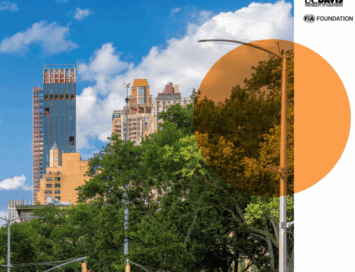Sustainable China

可持续发展的中国
Source: Karl Fjellstrom, ITDP
This article was published in ULI Asia Pacific Spring 2009 eNews.
Millions of people in Beijing and other Chinese cities are witnessing a dramatic improvement in the quality of their housing, offices, and where they eat and shop. But what will happen to city livability, traffic congestion, global oil consumption and climate change as more cities tear down once vibrant pedestrian and bicycle-oriented urban districts and replace them with the sort of new, automobile-oriented residential and office towers that seem to be rising overnight along Beijing’s major arterials? Many experts, faced with this dramatic transformation of Beijing, combine a dim prognosis with a search for solutions from Europe and other international good practice locations.
Yet Guangzhou, the capital of Guangdong province with more than 10 million inhabitants, shows that the search for solutions can be closer to home. If Chinese planning bureaus can learn to facilitate rather than obstruct the kinds of positive revitalization trends which are already taking place, while developers can learn to reinvent the positive characteristics of more traditional communities in new real estate developments, Chinese cities will be well on the way to a sustainable future.
可持续发展的中国
成千上万的人们在北京及其他中国大城市正在经历及见证一个重大的、对城市发展质量要求提高的变化,这个提高包括他们的住房、办公楼、餐饮消费和购物等地方。但是越来越多的城市在不断拆毁原来繁华的行人和自行车城市街区,在一夜之间,取而代之的是像林立于北京主干道上的、新颖的、以汽车为主导的高层住宅和办公大楼,这些城市的变化会对发展适宜人居的城市,交通堵塞,全球石油消耗和气候变化带来怎么样的影响呢?面对北京的这一巨大的城市发展变革,很多专家尝试结合欧洲和世界其他地方成功的发展个案来寻找一些解决办法
然而在广州,广东省的省会,一个拥有超过一千万人口的城市似乎已寻求到这些问题的解决办法。如果中国城市规划部门懂得促进而不是阻碍这些已经发生的正面的复兴改造发展,而开发商懂得把这些积极的具有城市文化特色的传统社区的要素融入到房地产发展中,那么中国将会迈向可持续发展的道路。



